Gluten-Free Diet Guide
Always read ingredients and check with the manufacturer if you are not sure if something contains gluten, and avoid the food until you are sure.
GRAINS NOT ALLOWED ON A GLUTEN-FREE DIET:
Wheat
- Whole grain wheat, also known as: Bulgur, Cous-cous, Durum, Einkorn, Emmer, Farina, Farro, Graham, Matzoh, Semolina, Triticale
- Wheat flour, also known as: All-Purpose Flour, Bolted Flour, Bread Flour, Bromated Flour, Cake Flour, Chapati Flour, Enriched Flour, Farina Flour, Gluten Flour, Graham Flour, Instant Flour, Organic Flour, Pastry Flour, Self-Rising Flour, Semolina Flour, Tortilla Flour, Triticale Flour, White Flour, Whole Wheat Flour
- Common foods that contain wheat:
- Baked goods such as muffins, cookies, cakes, pies
- Breads such as wheat bread, white bread, even “potato” bread
- Breakfast foods such as pancakes, waffles, crepes, cereals, doughnuts, bars
- Pasta (including orzo), noodles, pizza, pita, flour tortillas, bagels, crackers, breading, matzoh, croutons, panko, communion wafers, Rice-a-Roni, tabbouleh
Spelt and Kamut
- Though these are marketed as “wheat-free,” they are ancient forms of wheat that contain gluten
- Foods that contain spelt (also known as farro and dinkel) and kamut:
- Alternative breads
- “Wheat-free” cookies and other baked goods, flour, pasta, crackers and cereal
Barley and Rye
- Common foods and ingredients that contain barley:
- Beer
- Malt flavoring, syrup or extract (found in most commercial cereals)
- Malt vinegar
- Malted milk (in many candy bars and malt balls)
- Common foods that contain rye:
- Rye bread, pumpernickel bread
- Crackers and crispbreads (like Wasa, Ry Krisp, and Ryvita)
Oats (contaminated)
- Oats themselves do not contain gluten, but commercial oats are contaminated with wheat
- Common foods that contain contaminated oats:
- Bars
- Cereals
- Oatmeal
- Gluten-free (uncontaminated) oats are available: Bob’s Red Mill, CreamHill Estates, GlutenFreeOats.com, Gifts of Nature
FOODS AND INGREDIENTS THAT OFTEN CONTAIN GLUTEN:
- Asian Sauces: Soy sauce (most contain wheat, but you can buy wheat-free tamari), teriyaki sauce, oyster sauce, hoisin sauce
- Condiments: Mustard (may contain beer or wheat), bbq sauces and marinades (may contain soy sauce or malt flavoring)
- Seasonings, esp. those that come in packets (“spices” and “herbs” are GF)
- Soups, broth, stews, bisques, and anything made from a “roux” (mixture of wheat flour and fat)
- Prepared meats – check if it is breaded, floured or marinated
- Commercial cereals – most are made from wheat and/or have barley malt flavoring
- Imitation crab or other seafood (California Rolls)
- Imitation bacon
- Imitation meats and “Veggie” foods – burgers, sausages, etc.; Seitan = Satan!
- Processed meats
- “Multi-grain” products
- Savory foods made as a “cake” or “loaf” (potato pancakes, crab cakes, meat loaf)
- Mexican food (marinated meats may contain soy sauce; corn chips may be fried in same oil as fried flour tortillas)
- Candy (licorice contains wheat, many contain cookies or crisps or malt)
- Vitamins and medicines – go to www.glutenfreedrugs.com for GF medicine list
- Lipstick and any other non-food items that are likely to be ingested by accident (babies and kids put hands in mouth), like school supplies (playdough, paste), lotion, etc.
FOODS AND INGREDIENTS THAT COULD, BUT RARELY CONTAIN GLUTEN:
- Blue cheese
- “Corn” tortillas
- Flavored teas
- Bacon (Farmer John’s brand contains soy sauce)
- Brown rice syrup (sometimes made with barley)
- Dextrin (usually made with corn, but sometimes made with wheat)
- Mono and dyglycerides (must state source if wheat)
- Caramel color (most likely GF if made in U.S.)
- Modified food starch or modified starch (must state source if wheat)
- Hydrolyzed or textured plant or vegetable protein (must state wheat)
- Vegetable gum if source is unknown (gums that are GF: carageenan, carob bean, locust bean, cellulose, guar, gum arabic, gum acacia and xanthan gum)
- Natural and artificial flavorings (must state source if wheat, usually will state if made from barley)
INGREDIENTS THAT DON’T CONTAIN GLUTEN but sound like they do!
- “Starch” – refers to cornstarch in U.S.
- Glucose – a sugar usually made from corn
- Glucose syrup – even if from wheat, it is highly processed so no gluten remains
- Maltodextrin – made from corn
- Corn or rice malt
- Monosodium Glutamate (MSG)
- Maltitol – sugar
- Maltose – sugar
BASIC GLUTEN-FREE FOODS – here’s what you CAN eat!
- Gluten-free grains (see list below)
- Meat and fish – as long as not marinated or breaded
- Vegetables and fruits – fresh, frozen or canned
- Beans
- Nuts and seeds, as long as they are not coated with flour or flavoring
- Dairy products – check flavored varieties
- Eggs
- Spices and herbs
- Coffee and tea, although flavored varieties could contain barley malt
- Distilled vinegars (including red, white, balsamic, rice wine ; but malt vinegar is not GF)
- Wine and champagne, distilled alcohol (but flavored varieties may add gluten back in)
GLUTEN-FREE GRAINS, FLOURS AND STARCHES:
- Amaranth
- Arrowroot
- Buckwheat (also known as kasha – not to be confused with Kashi brand cereals, which are not GF)
- Corn, including polenta (make sure flour hasn’t been added)
- Potatoes, including potato flour and potato starch
- Millet
- Montina
- Nut flours
- Oats (if certified gluten-free)
- Quinoa
- Rice, including risotto
- Sorghum
- Soy
- Tapioca
- Teff
Note: The Food Allergen Labeling and Consumer Protection Act (FALCPA), mandates that foods labeled on or after January 2006 must declare the top 8 allergens, including wheat, in plain language either on the ingredient list or by using the words “Contains wheat.” There is currently no law regulating gluten-free products or the use of the term “gluten-free” on a food product.
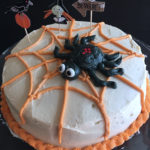
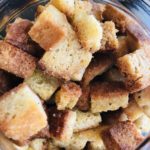
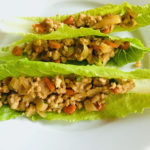

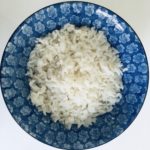
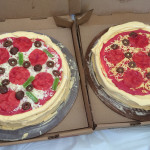
what people are talking about